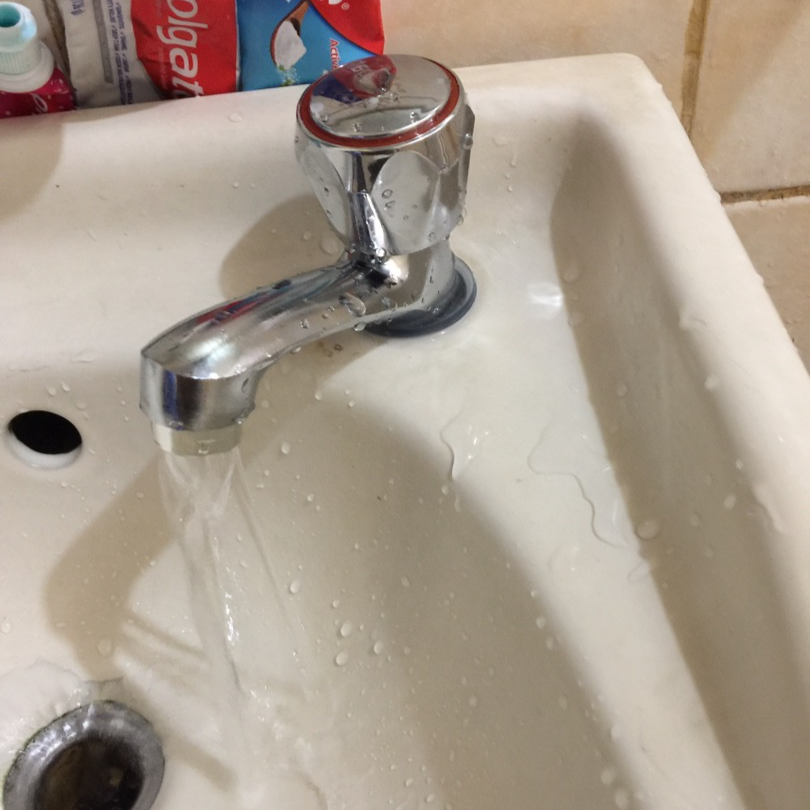Why It's Necessary to Correct a Malfunctioning Faucet
Why It's Necessary to Correct a Malfunctioning Faucet
Blog Article
Have you been in search of information and facts concerning 4 Common Reasons for a Leaky Faucet?

Trickling faucets could look like a small hassle, however their impact goes beyond just the nuisance of the audio. From drainage to incurring unneeded economic prices and health risks, disregarding a leaking faucet can cause different effects. In this write-up, we'll look into why it's crucial to address this typical house concern without delay and properly.
Wastefulness of Water
Ecological Influence
Trickling taps add substantially to water waste. According to the Epa (EPA), a single tap leaking at one drip per second can waste more than 3,000 gallons of water annually. This not only stress water resources but also affects environments and wildlife based on them.
Financial Costs
Increased Water Bills
Past the ecological effect, leaking faucets can blow up water expenses substantially. The accumulated wastage with time converts into higher energy costs, which might have been avoided with prompt repair services.
Prospective Residential Or Commercial Property Damage
In addition, extended leaking can lead to harm to fixtures and surfaces bordering the faucet. Water buildup can create staining, deterioration, and even structural concerns if left ignored, resulting in additional repair work costs.
Health and wellness Issues
Mold And Mildew and Mildew Growth
The continuous visibility of wetness from a dripping tap creates an excellent atmosphere for mold and mold growth. These fungi not just jeopardize interior air high quality but also present health threats, particularly for people with respiratory problems or allergic reactions.
Waterborne Illness
Stationary water in dripping taps can become a breeding ground for germs and various other pathogens, raising the risk of waterborne conditions. Contaminants such as Legionella germs grow in stagnant water, possibly leading to severe ailments when ingested or inhaled.
DIY vs. Specialist Repair
Advantages and disadvantages of Do It Yourself Repair Work
While some might try to fix a leaking tap themselves, do it yourself repairs include their own collection of difficulties. Without proper knowledge and devices, DIY efforts can intensify the concern or cause incomplete fixings, prolonging the problem.
Benefits of Employing a Specialist Plumber
Hiring a specialist plumber makes certain that the underlying cause of the trickling faucet is dealt with properly. Plumbing professionals possess the competence and equipment to identify and repair tap problems successfully, conserving time and minimizing the risk of further damages.
Step-by-Step Guide to Fixing a Dripping Tap
Tools Needed
Prior to attempting to take care of a leaking faucet, gather the required tools, consisting of a flexible wrench, screwdrivers, substitute components (such as washing machines or cartridges), and plumber's tape.
Typical Tap Issues and Their Solutions
Determine the kind of faucet and the details concern creating the drip. Common troubles consist of damaged washing machines, corroded valve seats, or defective O-rings. Refer to manufacturer instructions or on-line tutorials for detailed support on repairs.
Preventive Measures
Routine Maintenance Tips
To avoid trickling faucets, carry out regular maintenance such as cleaning up aerators, examining for leakages, and replacing damaged components immediately. Furthermore, take into consideration installing water-saving tools or updating to much more efficient components.
Significance of Prompt Repairs
Attending to leaking faucets as quickly as they're discovered prevents further water wastefulness and prospective damage, inevitably saving both water and cash over time.
Impact on Residential Or Commercial Property Worth
Understanding of Well-Maintained Home
Maintaining a property in good condition, consisting of dealing with upkeep issues like trickling faucets, boosts its viewed worth and value among possible buyers or lessees.
Influence on Resale Worth
Residences with properly maintained plumbing fixtures, consisting of faucets, command greater resale worths in the real estate market. Attending to dripping faucets can contribute to a favorable impression throughout property assessments and arrangements.
Environmental Obligation
Specific Contribution to Conservation
Taking duty for fixing leaking taps straightens with broader initiatives towards water conservation and environmental sustainability. Every person's activities jointly make a considerable effect on maintaining precious resources.
Sustainable Living Practices
By prioritizing timely repair services and taking on water-saving habits, individuals add to lasting living practices that benefit both present and future generations.
Final thought
Attending to a trickling faucet surpasses plain convenience; it's a vital action towards saving water, minimizing economic prices, and safeguarding health and home. Whether with DIY repair services or specialist support, acting to take care of leaking faucets is a little yet impactful method to advertise accountable stewardship of resources and contribute to a healthier, more sustainable future.
How to Fix a Leaky Faucet: Step-by-Step Repair Guide
A leaky faucet may seem like a simple annoyance, but if it's not fixed promptly, that leak could cost hundreds to potentially thousands. From water damage to mold, mildew, and high water bills, even a tiny leak can be catastrophic if left unattended. Damage like this can even affect the overall value of your home, so it's important to take the right approach for leaky faucet repair. You may need the help of a plumber in some cases, but we've got a few tips you can try on how to fix a leaky faucet before calling the pros.
Four Faucet Types
When you're learning how to fix a leaky faucet, the first step is knowing what kind of faucet you're working with! There are four common types.
Cartridge Faucets
Cartridge faucets come in one- or two-handled varieties. In one-handled cartridge faucets, hot and cold water combines in a single cartridge. In the two-handled versions, hot and cold water are controlled separately and mixed in the faucet.
Ball Faucets
Ball faucets have a single lever you push up and down to adjust the pressure and rotate to change the temperature. A slotted metal ball controls the amount of water allowed into the spout.
Compression Washer Faucets
They're the oldest type of faucet, but they're still used in many homes — especially older ones. Compression faucets have two separate handles that, when turned, raise or lower the washer that seals a water valve. This valve stops water from flowing through the faucet when it is turned off.
Disc Faucets
Disc faucets rarely need to be repaired due to their maintenance-free design. The water flow is controlled by two discs — the upper one raises and lowers against a fixed lower disc, creating a watertight seal. If your disc faucet starts leaking, you may need to replace the seals or clean residue buildup from the inlets.
Fixing a Leaky Faucet
Step 1: Turn Off the Water
Whether you're learning how to fix a leaky bathtub faucet or how to fix a leaky kitchen faucet, always turn off the water supply to your working area when you're fixing a leak. The last thing you want is a flood added to your list of things to fix.
Look for the shutoff valves below your sink or around the tub and turn them clockwise to stop the water flow. If your faucet doesn't have shutoff valves, you may need to turn off the water for the whole house. Check to make sure it's off by turning the faucet on. If nothing comes out, you're ready to start the repair.
Step 2: Take Apart the Faucet
How you disassemble your faucet depends on the type of fixture you have. You can use a flathead screwdriver to remove the caps on top of the handle or handles for cartridge and compression faucets. Inside, you should see handle screws. Unscrew these with a screwdriver to remove the handle.
Disc- and ball-style faucets will typically have an inlet screw near the handle, and removing that will reveal the interior of the faucet.
Detach the Valve Stem
For cartridge- and compression-style faucets, you'll see the inner valve stem or cartridge once you remove the faucet handles. If you have a compression faucet, unscrew the brass valve stem. If you have a cartridge faucet, pull out the cartridge. If your cartridge has been in place for a while, it may require some tools or extra force to remove it due to mineral deposits.
Examine and Replace Parts
Once you've removed the parts, check them out to confirm what needs to be replaced. You may see corroded rubber washers, O-rings, stems, or cartridges. On a ball-style faucet, check the seats and springs for damage.
If you need to repair a leaky disc faucet, check the inlet and seals on the lower disc.
Once you determine what parts must be replaced, visit your local hardware store. Bring the damaged parts with you to ensure you can purchase the correct components to replace them.
Clean Valves and Faucet Cavity
If you've removed a stem or cartridge, you may notice mineral buildup in the faucet's threads. Use white vinegar to clean the valve seat by soaking it for a few minutes, then scrub it away with a soft toothbrush and rinse with warm water. You can also clean the interior of the faucet in the same way.
Reassemble the Faucet
Once your faucet is cleaned and the required parts have been replaced, it's time to reassemble it. Put the pieces back together and slowly turn the water supply back on. Doing this slowly is crucial because too much initial water pressure can damage the new hardware you've just installed.
https://homewarranty.firstam.com/blog/how-to-fix-leaky-faucet

As a passionate reader on Water Dripping from Faucet: Why and How to Fix, I assumed sharing that segment was a good thing. Do you know about another individual who is inquisitive about the topic? Feel free to share it. We cherish reading our article about Why Is It Important To Fix Your Leaking Tap/Faucet?.
Report this page